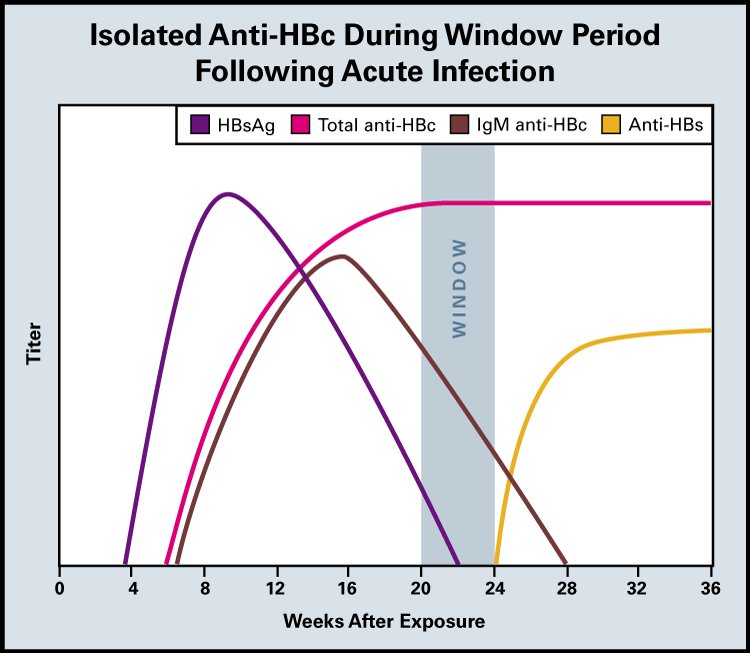Introduction
Though hepatitis B can hardly warrant the title of the scourge of the 21st century, it clearly has a very negative effect on the health rates all over the world (Centers for Disease Control and Prevention, 2012a). The disease quickly develops into a chronic one, thus, creating premises for more health issues to emerge in the next few years. The residents of Chicago are no exception to the rule; also stricken by the disease, numerous denizens of the local population need urgent help. By analyzing the issue closer and identifying the factors causing the increase in the number of hepatitis B patients, one will be able to locate the means of addressing the problem.
Problem Background
A lot has been done over the past few decades in order to address the issue regarding the hepatitis problem in the United States in general and in Illinois in particular. Unfortunately, the measures undertaken to address the issue of chronic hepatitis B rates are still high in the Chicago area. One must admit that, compared to the nationwide statistics, Illinois in general and Chicago, in particular, have shown rather impressive results, the rates of HBV having dropped by 30% from 2007 to 2011 (Centers for Disease Control and Prevention, 2012a). According to the statewide statistics, the rates of chronic hepatitis B development have risen significantly over the past few years (Illinois – 2013 state health profile, 2013). Nevertheless, the instances of HBV contraction are still very numerous, especially among children and infants (Centers for Disease Control and Prevention, 2012a).

According to the data in Fig. 1 above, the number of instances of hepatitis B contraction in Chicago dropped significantly in 2009 and has been comparatively stable since then; the specified change can be attributed to the promotion of vaccine against HBV suggested in 2008 (Centers for Disease Control and Prevention, 2012). Nevertheless, the fact that the Chicago residents saw a rather sharp increase in the number of HBV contractions in 2012 proves in a quite graphic manner that the problem of HBV is yet to be solved.
Chronic Hepatitis B: Descriptive Epidemiology Analysis
Traditionally defined as “an extremely infectious virus that is spread when infected blood, semen, or another body fluid enters the body of a non-infected person and can also be spread from mother to infant at birth” (Alatrakchi, 2015) and also known as HBV, chronic hepatitis B poses a huge threat to the patient’s wellbeing and affects the liver, resulting in cirrhosis (Alatrakchi, 2015). HBV is a blood-borne virus and, therefore, can be transmitted in five ways, which are 1) contact with infected blood; b) from a mother to a baby; c) from sexual intercourse; 4) from sharing needles; 5) from blood transfusion (Centers for Disease Control and Prevention, 2012).
By taking a closer look at the contraction of hepatitis B in the Chicago area, one will realize that the disease affects the Asian population for the most part (Hepatitis B among U.S. Asians, 2014). According to a recent study, the Chinese denizens of the state population are in the greatest jeopardy at present, as the chart below says. However, the recent programs, such as the Hepatitis Education and Prevention Program, which the Asian Health Coalition (AHC) has developed (Chandrasekar, Kaur, Song, & Kim, 2015), allow for keeping the HBV rates in the designated area low.

As far as the age of the people affected by the disease and living in the specified area is concerned, children and the people born before the vaccine for hepatitis B prevention was provided (Surveillance for viral hepatitis – the United States, 2011) seem to be facing the greatest threat at present:
The risk for chronic HBV infection decreases with increasing age at infection. Of infants who acquire HBV infection from their mothers at birth, as many as 90% become chronically infected, whereas 30%–50% of children infected at age 1–5 years become chronically infected. This percentage is smaller among adults, in whom approximately 5% of all acute HBV infections progress to chronic infection. (Surveillance for viral hepatitis – United States, 2011, par. 12).
Therefore, it is highly desirable that the measures to be undertaken to address the situation should be designed with the fact that the target population consists primarily of children, teenagers, adolescents and young adults.
Current National Standards: Diagnosing, Screening, and Prevention
According to the U.S. nursing standards listed by the Center for Disease Control and Prevention (CDC), the process of identifying the victims of hepatitis B starts with a series of tests. However, the process of testing is often hindered by the fact that HBV has a comparatively long incubation period, which may last 1–4 months. Consequently, the results delivered by the test that was carried out at the earliest stages of the disease development may not be as precise as they must be so that efficient treatment could be administered to the patient (Haryanto et al., 2012).

Typically, a series of tests are run to identify the disease. Particularly, the hepatitis B surface antigen (HBsAG) helps identify whether the viruses in the patient’s body are covered with protein (Centers for Disease Control and Prevention, n. d.). Next, the hepatitis B surface antibody (anti-HBs) test is run to check whether the patient has developed any antibodies to fight HBV (Demirören, Kocamaz & Doğan, 2015). Finally, the total anti-hepatitis B core (anti-HBc, IgM and IgG) is taken to locate IgM and IgG, as well as make sure that the specified antibodies fight the core antigen created by the HBV (Demirören et al., 2015).
The treatment of the problem starts with a series of immunization shots (The liver, 2015). However, the process of treatment traditionally starts only after specific problems with the liver, such as flaws in its functioning, can be identified. Therefore, it is essential to supervise patient care in order to prevent the possible aggravation of the situation. It should also be borne in mind that specific medicine, such as “interferon and nucleoside reverse transcriptase inhibitors (NRTIs)” (The liver, 2015, par. 17) must be provided to the patients so that the process of recovery could begin.
As far as the prevention of the disease is concerned, the current policy of spreading awareness in the Chicago area seems to be somewhat flawed. Despite the attempts of local nurses to enhance patients’ enthusiasm in learning about hepatitis B and how to avoid it, the target denizens of the population remain just as ignorant about the issue as they were several decades prior. Therefore, a new approach as opposed to the current one needs to be designed. Currently, the prevention measures such as consistent screening and testing are viewed as the most reasonable choice. Apart from the traditional warnings concerning the exposure to the threat of HBV in the workplace, the information regarding sexually transmitted diseases and Hepatitis B has been issued by CDC (Centers for Disease Control and Prevention, 2015). It seems that the latter information needs to be spread among the target population, as it may be the key cause for the disease to spread further.
Addressing Hepatitis B in Chicago Area: A Plan
When it comes to identifying major problems with the promotion of nursing services for people with HBV, a complete lack of awareness regarding the subject matter is the first detail to notice. Therefore, launching a major campaign for increasing awareness on the subject matter must be viewed as the first step towards addressing the issue of HBV rates among the Chicago residents. As soon as the target denizens of the population realize the significance of the issue and learn to identify the primary symptoms in order to address the appropriate nursing facility, the corresponding services must be provided. Specifically, the screening tests should be made available to all those with the symptoms of HBV or suspected to have developed the disease. Since research have shown that the representatives of the Latino population are mostly affected by the disease, it will be reasonable to suggest providing the required information in both English and Chinese. Thus, key knowledge will be available to all those concerned. Moreover, it is highly advisable that the staff in the corresponding facilities within the Chicago area should be instructed on how to provide relevant information to those needing it.
Afterward, the need to administer vaccines to the target population is essential for the successful treatment and prevention of the issue. Seeing that hepatitis B injections have been available since 2008 (Viral hepatitis surveillance – the United States, 2009), it is crucial that the target denizens of the Chicago population should be provided with full access to the vaccines in question. Thus, one may prevent hepatitis B from spreading any further.
Additionally, the vaccination process must be carried out not in the traditional manner, but with the incorporation of the hepatitis B immunoglobin vaccine (Cao et al., 2015). The specified precaution measure is essential for addressing the needs of one of the target population groups. As has been stressed above, infants, children and teenagers are in the risk zone due to the underdevelopment of their immune system and the exposure to a variety of diseases (Cao et al., 2015). Consequently, the incorporation of the safety measures against attacks on their immune system by viruses and the ones against the development of HBV are essential to the wellbeing of the target denizens of the Chicago population.
Additionally, the necessity to cater to the needs of young children and teenagers deserves to be mentioned as the essential detail defining the nursing strategy. It is crucial that the information provided to the target population in the course of the awareness campaign should be simple and concise; moreover, the fact that some of the target patients may be unable to reach the corresponding facility due to their young age and the lack of awareness among their parents needs to be brought up. Thus, nurses will have to provide domiciliary services to patients aged 0–15 years. Consequently, the Chicago nursing facilities will need the equipment that can be moved around the city, as well as the vehicles that will have room for the staff and the above-mentioned equipment. Hence, developing a detailed cost strategy for purchasing the necessary equipment and vehicles will be the next step of the plan. Finally, the quality of communication between patients and nurses must be improved so that the potential suspects for HBV could be identified quickly and diagnosed accordingly. The use of modern media as the key tool for raising awareness regarding the threats of HBV (Samkange-Zeeb, 2013) should also be viewed as a potentially successful idea.
Finally, the issue regarding sanitation should be brought up. According to the information that has been recently made public, the lack of control over the sanitation issue in several nursing homes in Chicago has led to infecting a number of people with hepatitis B with dirty needles:
According to news reports, the owner of the facility (GlenCare of Mount Olive) claims that the Division of Public Health investigators told him that the outbreak stems from five medical technicians who had reused diabetes pens when checking patients’ blood sugar levels. (Griffin, 2010, par. 2)
On the one hand, the above-mentioned issue may turn out to be an isolated case of medical negligence; on the other hand, when unattended, the issue under analysis may grow out of proportions, therefore, leading to an even greater problem concerning the increase in the number of HBV patients. Thus, it is strongly suggested that regular audits should be conducted to check compliance with the existing sanitary norms. Moreover, the latter may be enhanced to the point where the needles used in the process of administering injections to the patients should be disposable.
The measurement of the outcomes will be possible as soon as the results of the above-mentioned actions are quantified. First and most obvious, the increase in the number of people, who have addressed the corresponding nursing facilities in an attempt to learn about the subject matter or to screen for the disease, needs to be mentioned as the key characteristic. Moreover, the number of HBV patients recovering successfully must be calculated to identify the progress. The number of cases of unsanitary conditions also needs to be taken into account as the key measure of progress. Finally, the number of feedbacks received from the patients, as well as the number of instances of successful communication with patients, will be used as another parameter for measuring success.
Conclusion
Despite the recent strategy aimed at reducing the threat of hepatitis B development in the residents of the Chicago area, the problem remains just as topical as it used to be several years before. Transmitted through blood, sexual intercourse and during childbirth from a mother to a child, the disease affects the body in a drastic way, causing cirrhosis and other disorders. Being exposed to a range of risk factors triggering the development of hepatitis B, the residents of the Chicago area need a special intervention program, which will help raise awareness on the subject matter and help the victims of hepatitis B.
References
Alatrakchi, N. (2015). Bregs in chronic HBV: Is it time for bragging rights? Digestive Diseases and Sciences, 60(5), 1115–1117.
Asian Health Coalition. (2010). Chicago Asian community surveys: A comprehensive report. Washington, DC: Asian Health Coalition.
Cao, L.-H., Liu, Z.-M., Zhao, P.-L., Sun, S.-C., Xu, D.-B., Shao, M.-H. & Zhang, J.-D. (2015). Efficacy of combined hepatitis B immunoglobulin and hepatitis B vaccine in blocking the father-infant transmission of hepatitis B viral infection. Genetics and Molecular Research, 14(2), 46514657.
Centers for Disease Control and Prevention. (2012). Hepatitis B FAQs for the public. Web.
Centers for Disease Control and Prevention. (2012a). Surveillance for viral hepatitis – the United States. Web.
Centers for Disease Control and Prevention. (2015). Screening recommendations are referenced in treatment guidelines and original recommendation sources. Web.
Centers for Disease Control and Prevention. (n. d.). Interpretation of hepatitis B serologic test results. Web.
Chandrasekar, E., Kaur, R., Song, S. K. & Kim, E. (2015). A comparison of the effectiveness of hepatitis B screening and linkage to care among foreign-born populations in clinical and non-clinical settings. Journal of Multidisciplinary Healthcare, 8(1), 1–8.
Demirören, K., Kocamaz, H. & Doğan, Y. (2015). The importance of the serum quantitative levels of hepatitis B surface antigen and hepatitis B e antigen in children with chronic hepatitis B. The Turkish Journal of Gastroenterology, 26(1), 36–41.
Griffin, P. (2010). Dirty needles maybe because of the hepatitis B outbreak in nursing homes. Web.
Haryanto, A., Schmitz, A., Rabe, B., Gassert, E., Vlachou, A. & Kann, M. (2012). Analysis of the nuclear localization signal of the hepatitis B virus capsid. International Research Journal of Biochemistry and Bioinformatics, 2(8), 174–185.
Hepatitis B among U.S. Asians. (2014). Web.
Hepatitis web study. (2013). Web.
Illinois – 2013 state health profile. Web.
Samkange-Zeeb, F. (2013) Assessing knowledge and awareness of sexually transmitted infections among school-going adolescents. Web.
Surveillance for viral hepatitis – United States. (2011). Web.
The liver. (2015). Web.
Viral hepatitis surveillance – United States. (2009). Web.